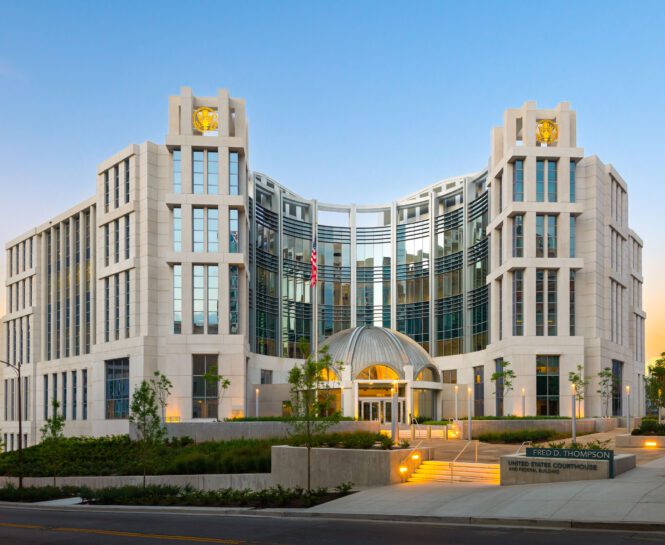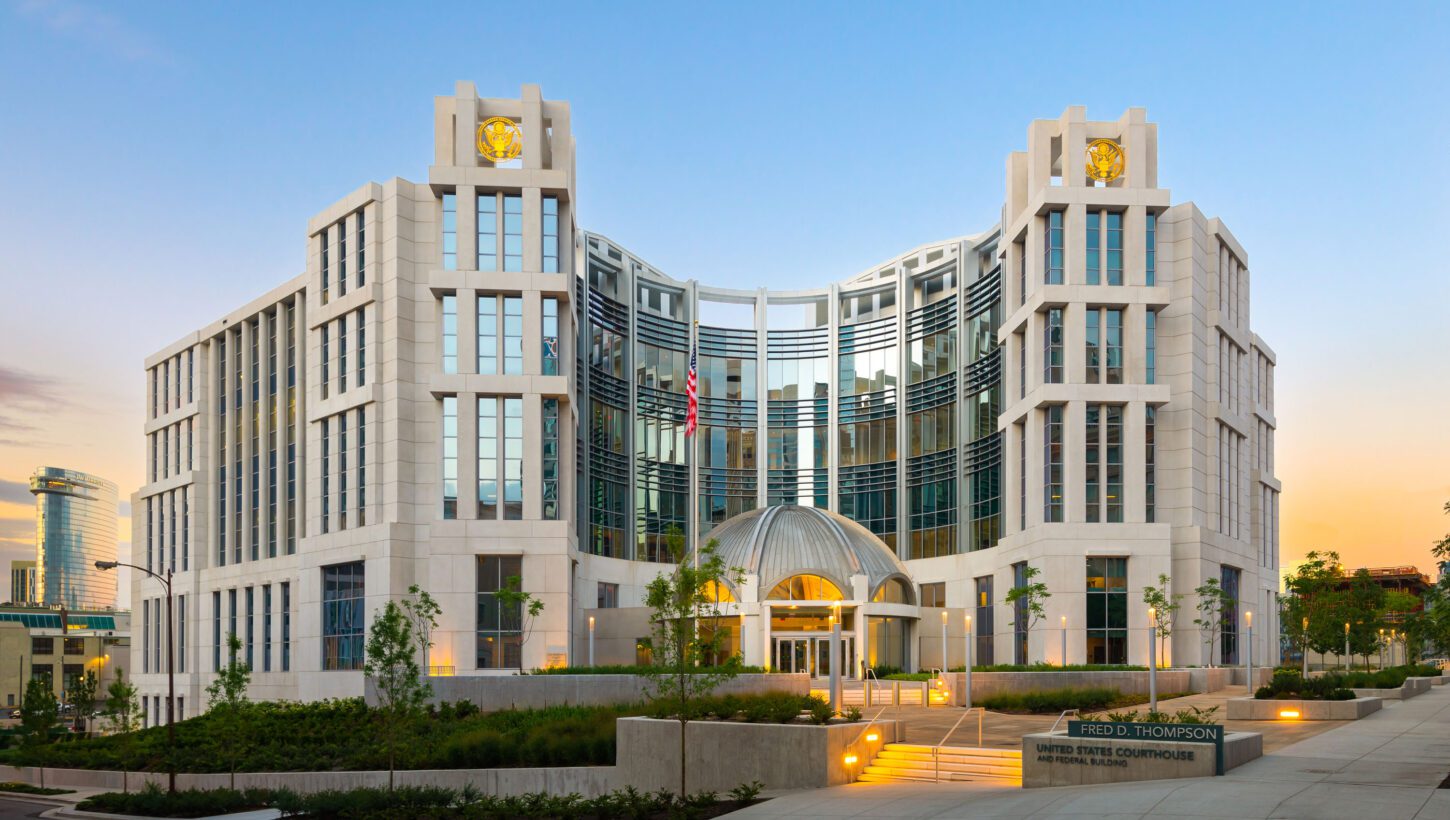
Courthouses
- Expertise
- Awards
- Design
- Sustainability
- Contact
Prominent, Enduring + Memorable Courts Facilities
Over the past 30 years, Fentress Architects has designed courts facilities that house more than 250 courtrooms within all levels of the courts system: federal, state and municipal. Consequently, Fentress has designed a wide variety of courtroom types including district and circuit courts, state supreme courts, courts of appeals, juvenile and family courts. In addition, remarkable accessibility, efficiency and dignity are the hallmarks of Fentress Architects-designed courts.
In fact, Fentress continues to rank among the top global Architecture + AE firms for government sector architecture. Last year, Fentress ranked among the top 15 on Building Design + Construction’s Giants List.
When people engage with these facilities, they experience the remarkable accessibility, efficiency, stability and dignity that have garnered Fentress’ civic and courts portfolio over 90 honors and awards including:
- Johnson County Courthouse Capstone Award, Architectural Design by Kansas City Business Journal 2021
- Norfolk Consolidated Courts Complex Awards for Excellence – Craftsmanship by Architectural Precast Association (APA) 2020
- East County Hall of Justice Justice Facilities Review by AIA Committee on Architecture for Justice 2018
- Ralph L. Carr Colorado Judicial Center TAP Building Information Model (BIM) Award AIA National 2013
- Four projects selected for 10-Year Retrospective by National Center for State Courts 2010: Larimer County Justice Center, Loveland Police and Courts Building, Norfolk Consolidated Courts Complex, Ralph L. Carr Colorado Judicial Center
“If my court were being designed today, it would likely follow the lead of the Ralph L. Carr Colorado Judicial Center which uses a grand glass façade… and a large atrium to convey transparency and invite the public inside.” – U.S. Supreme Court Justice Sonia Sotomayor
“[Yolo County Courthouse] will be here for generations as a testament to what Yolo County values. It is a manifestation of how much we value justice in this community.” – Kathleen White, former Presiding Judge and chair of the Design Committee
Furthermore, Fentress has designed over 50 USGBC LEED-Certified projects, including:
- Ralph Carr Judicial Center LEED Gold
- Fred Thompson US Courthouse + Federal Building LEED Gold + SITES Silver (pending)
- Johnson County Courthouse LEED Gold + WELL Building
- East County Hall of Justice LEED Silver
- Rush Hudson Limbaugh, Sr US Courthouse LEED Silver
- Yolo County Courthouse LEED Silver
Karen Gilbert, Associate AIA
Director of Business Development
kgilbert@fentressarchitects.com
+1.303.282.6120
-
Huntsville U.S. Courthouse
-
Johnson County Courthouse
-
Fred D. Thompson US Courthouse + Federal Building

-
Ralph L. Carr Colorado Judicial Center
-
Albemarle County Courts Complex
-
Norfolk Courts Complex
-
East County Hall of Justice
-
Yolo County Courthouse
-
Larimer County Justice Center
-
Rush H. Limbaugh Sr. U.S Courthouse
-
Al-Farwania + Al-Jahra Court Complex
-
Jefferson County Government Center
-
St. Louis Justice Center + Juvenile Detention Center Expansion